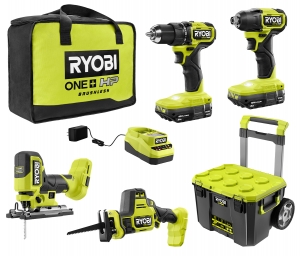Creating a Glossy Bar Top Finish: A DIY Guide
Have you ever wanted to elevate the look of your home bar to look like liquid glass? A glossy bar top can add a touch of sophistication and style to your space. In this DIY guide, we will walk you through the steps to create a stunning glossy bar top that will impress your guests and elevate your home entertainment experience. In fact, this technique can be used for other pieces of furniture as well. This tutorial will show you how to achieve that stunning, glossy finish using a simple two-part epoxy and a hairdryer.
The reflective surface creates a sense of depth and sophistication, making your bar area stand out. Additionally, the smooth finish is easy to clean and maintain, ensuring your space always looks pristine for entertaining guests or simply enjoying a drink after a long day.
Top Tips for Creating a Stunning Glossy Bar Top:
1. Surface Preparation is Key: Ensure the bar top surface is clean, smooth, and free of any debris before applying the epoxy to achieve a flawless finish.
2. Use High-Quality Epoxy Resin and Hardener: Invest in a high-quality epoxy resin for a durable and long-lasting glossy finish that will withstand daily wear and tear.
3. Work in a Well-Ventilated Area: Epoxy fumes can be strong, so make sure to work in a well-ventilated space or use a respirator mask to protect yourself.
4. Make sure you follow the directions on the environment because the temperature is really important in the curing time.
5. Immediately after applying the epoxy, using a hair dryer can help quell any air bubbles.
A glossy bar top can be achieved by using bar top epoxy coating, a mixture of epoxy resin and hardener, which is readily available at hardware stores like Home Depot, Lowes, and Michaels. This epoxy provides a protective and durable finish that enhances the natural beauty of the bar top material. The seal coat is your first coat and once dry, you apply the flood coat which is what gets the high-gloss shine.
Materials Needed:
- Two-part epoxy resin and hardener
- Gloves
- Foam brush or squeegee
- Hairdryer
- Protective surface
Instructions:
1. Prepare the Surface:
- Ensure that your bar top is clean, dry, and free of any dust or debris before starting the epoxy application. Use a gentle cleaner to remove any dirt or grime, and let it dry completely.
2. Mix the Epoxy:
- Follow the manufacturer's instructions for mixing the epoxy resin and hardener. Typically, a 1:1 or 2:1 ratio is used.
- Mix thoroughly to ensure the hardener is evenly distributed.
3. Apply the Seal Coat:
- Pour a small amount of the mixed epoxy onto your surface.
- Use a foam brush or squeegee to spread the epoxy evenly, covering all areas.
- Pay attention to corners and edges.
- If bubbles appear, use a hairdryer on low heat to pop them.
- Allow the seal coat to dry completely according to the manufacturer's instructions. This usually takes several hours.
4. Apply the Flood Coat:
- Pour a generous amount of the mixed epoxy onto the sealed surface.
- Spread the epoxy evenly, allowing it to drip over the edges.
- Use a foam brush to smooth out any uneven areas.
- If bubbles form, use a hairdryer on low heat to remove them.
- Allow the flood coat to cure completely, which typically takes 24 hours.
5. Enjoy Your Glossy Finish!
Once the epoxy is fully cured, your bar top will have a beautiful, glossy finish that resembles liquid glass. The process of achieving a glossy bar top involves several key steps, starting with preparing the surface and then moving on to mixing and applying the epoxy. Ensuring a smooth finish requires attention to detail, especially when applying both the seal coat and flood coat. Remember to follow the manufacturer's guidelines for mixing ratios and curing times, as each product may vary. By taking these precautions and following the outlined steps diligently, you can create a flawless glossy finish that will elevate the overall look of your bar area. Want more ideas for refinishing? You may enjoy how to restore the finish on an antique table and how to sand, stain, and topcoat furniture.
Recommended Articles

The How’s and Why’s of Upgrading a Central AC System
A step-by-step video demonstration showing removal and replacement of a central air conditioning system. Includes advantages of new, state-of the-art AC systems.

If You’ve Got a Project That Involves Demolition, You’ll Want to Know About This Tool.
I try out a new tool designed and engineered to do one task exceptionally well -- demolition.
